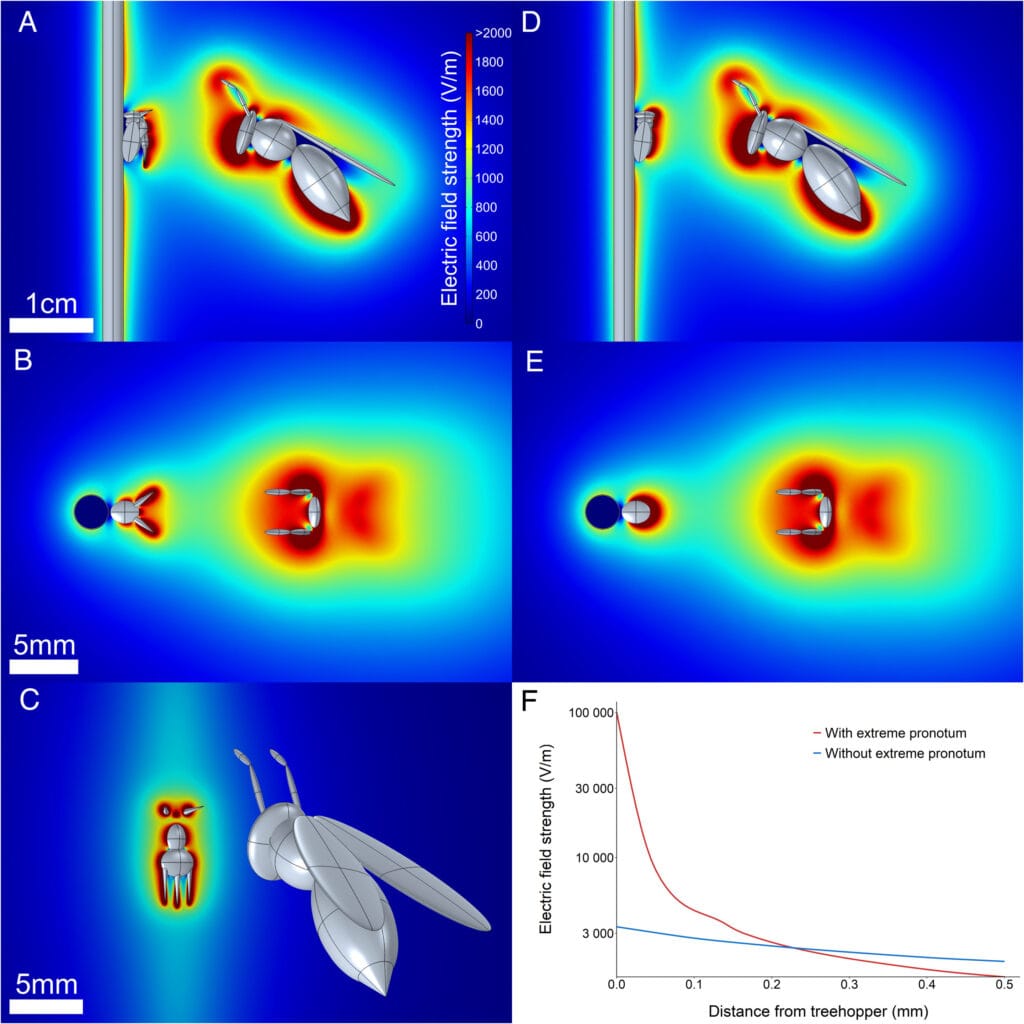When we imagine the animal kingdom’s senses, we tend to default to the familiar—vision, hearing, smell. But nature is infinitely more creative than we are. Evolution doesn’t work from a script; it adapts, improvises, and innovates in silent symphonies of biological engineering. Some of its most stunning inventions hide in plain sight—like the ears of the greater wax moth, tuned to frequencies higher than any other known animal, or the eyes of the mantis shrimp, which perceive colors we cannot even imagine. These creatures demonstrate that nature’s sensory palette is far broader than our own human experience allows us to grasp.
And within this vibrant spectrum of sensory abilities lies one of evolution’s most mystifying tools: electroreception—the capacity to detect minute electric fields in the environment. It’s a phenomenon that sounds almost supernatural, and yet it pulses quietly through the lives of hundreds of species, particularly those that dwell in water, where conductivity makes this sense far more effective. Sharks use it to locate hidden prey, catfish to navigate murky rivers, and electric eels to communicate through shockwaves of information.
But on the branches of tropical forests, far from the depths where we might expect such adaptations, a tiny, alien-looking insect may be rewriting the rules.
A Living Enigma in the Trees
Perched delicately on the stems and leaves of countless plants is a creature so peculiar, it’s often mistaken for a part of the plant itself. The treehopper, a relative of cicadas and leafhoppers, wears an evolutionary riddle on its back: an enormous, shield-like structure called the pronotum. Depending on the species, this elaborate structure can jut forward like horns, sweep backward like feathers, or flare out into spiked, plant-like armor. Some treehoppers even dazzle with bright colors and intricate patterns, making them look like something conjured from a dream—or a science fiction film.
For decades, scientists stared at the treehopper’s surreal silhouette and asked: why? What could possibly justify the evolutionary cost of building such an extravagant feature? Camouflage? Intimidation? Sexual selection? None of the existing hypotheses fully satisfied the question. The pronotum’s size and complexity seemed excessive even for the purposes of disguise or deterrence.
And now, thanks to a groundbreaking study published in the Proceedings of the National Academy of Sciences, the answer might finally be emerging—not in the visible world, but in the invisible currents of electricity flowing silently through the air.
Electric Worlds, Invisible Threats
Insects are extraordinarily attuned to their environments. Bees can see ultraviolet patterns on flowers that guide them like glowing runways. Butterflies taste with their feet. And some insects, as recent studies have confirmed, can even detect faint electrical fields. It’s a sense we humans entirely lack, and therefore tend to underestimate. But for creatures operating in a world of fast movements and frequent danger, electrical cues can offer crucial survival information.
The new study zeroes in on treehoppers and asks a radical question: what if that bizarre pronotum isn’t just for show—but acts like an antenna for detecting electrical fields?
Researchers had previously observed that certain insect body parts—especially antennae in bees, mites, and caterpillars—can react to nearby electrostatic fields. Flowers, for example, generate faint electrical charges as bees approach, subtly shifting charge distributions on petals. Some pollinators have evolved the ability to detect these changes, allowing them to distinguish which flowers have recently been visited and which are ripe for harvest.
But for treehoppers, the hypothesis was even more exotic. What if their oversized, helmet-like pronotum was actually evolved not just to passively receive electrical fields, but to amplify them?
Into the Forest’s Electric Breath
To test this notion, scientists traveled deep into the tropical forests of Costa Rica, where a rich array of insect life creates a natural laboratory for evolution’s weirdest experiments. There, they deployed a ring electrode system—essentially a device that can measure the electric fields around insects in their natural environment.
They recorded data from 151 wild treehoppers, as well as two species of stingless bees and two kinds of wasps—predators that often feed on smaller insects like the treehopper. As these insects passed through the ring, the team collected electrostatic readings.
What they found was astonishing.
As a predatory wasp approached a plant hosting a treehopper, an electric field formed between them—like an invisible tripwire stretched through the air. But more than that, the most pronounced electrical signals weren’t radiating from the insect’s antennae or legs. They were concentrated around the treehopper’s outlandish pronotum.

In fact, the protruding tips of the pronotum showed electrical field strengths up to 50 times higher than the surrounding baseline. The implications were staggering. This wasn’t just a weird growth. It was a sensitive receiver, perhaps even a directional amplifier, designed by evolution to detect danger long before the predator’s shadow ever touched the treehopper’s body.
The Shape of Silence
What makes this discovery even more extraordinary is what the researchers found when they looked deeper into the shape and surface area of the pronotum. The design appeared to have properties that not only made it responsive to incoming fields—but also potentially allowed it to diminish the treehopper’s own electric signature. In other words, this structure may cloak the insect from detection by predators that use electroreception themselves.
In physics, form follows function. In evolution, this principle sometimes emerges in surprising ways. In this case, the treehopper’s pronotum may act as both a passive receiver and an active defense, a strange kind of biological antenna that not only listens to the electric whispers of the forest—but also hides the listener.
This is not the camouflage we’ve come to expect from nature. It’s not a matter of blending into leaves or mimicking thorns. This is electrical invisibility—a shield of silence in a world alive with invisible sparks.
Electroreception’s Expanding Empire
For a long time, electroreception was thought to belong solely to fish and amphibians—animals immersed in conductive water, where electric fields travel easily. Then, in 1986, the evolutionary boundaries shattered again: scientists discovered that the platypus—that duck-billed, egg-laying oddity of Australia—could detect electric fields as it hunted prey in murky streams. Even its cousin, the echidna, showed faint signs of the same ability, though more limited.
Then in 2013, a team led by Daniel Roberts, a co-author of the new treehopper paper, found that bees could detect the faint electric fields generated by flowers. This revelation prompted a reevaluation of how electricity might influence ecological relationships across ecosystems. It wasn’t just for navigation or communication. It might shape who feeds on whom, who pollinates what, and who survives in a universe of unseen energy.
The new treehopper research is a continuation of that revelation. It hints that electroreception is far more widespread than we imagined—and that evolution has sculpted an astonishing diversity of tools to exploit it.
Listening with the Body
For the treehopper, the pronotum may be a literal sensory organ—a sculpted listening device tuned to the subtle fluctuations of electrical potential in the air. This means that for these insects, danger isn’t something seen or heard first. It’s felt, as a tremble in the electric field, a quiet surge of energy moving like wind over their skin.
And perhaps, long before a wasp’s wing flickers into view, the treehopper already knows it is coming.
This is evolution not just adapting, but innovating. Nature, when cornered by the constant pressures of survival, doesn’t simply modify old tools. Sometimes it builds entirely new ones—from scratch, from inspiration, from physics itself.
The treehopper’s strange armor may look like a flourish of random beauty, but beneath its surface lies the story of an ancient arms race—a conversation between predator and prey carried out not in sound or sight, but in static charges and silent pulses.
The Hidden Currents of Evolution
What this research teaches us is that the sensory world is far bigger than we thought. For every bird that sings, there may be a moth that hears frequencies beyond ultrasound. For every flower that shines in UV, there may be a bee that senses its faint electrical aura. And for every predatory wasp that hunts by sight, there may be a treehopper that vanishes not by hiding, but by becoming electrically invisible.
We tend to think of evolution as slow and brutal, grinding out solutions through sheer necessity. But sometimes, it creates masterpieces—elegant, sophisticated, even poetic solutions to problems we didn’t know existed.
The treehopper, with its alien helmet and hidden sense, is one such masterpiece. And as scientists continue to peel back the layers of its morphology and behavior, they may uncover even more evidence that life doesn’t just adapt to its environment—it listens to it, reads its energy, and bends it into shapes that ensure survival.
Even in the tiniest of creatures, evolution paints in electric strokes.
Reference: Sam J. England et al, Electroreception in treehoppers: How extreme morphologies can increase electrical sensitivity, Proceedings of the National Academy of Sciences (2025). DOI: 10.1073/pnas.2505253122






